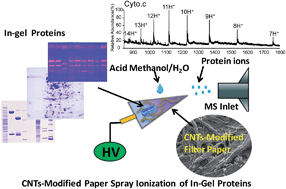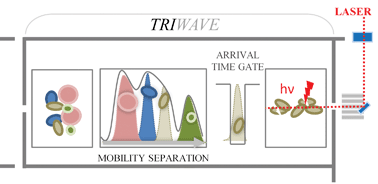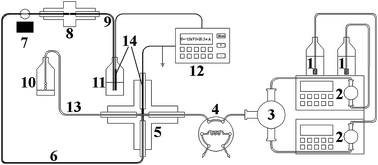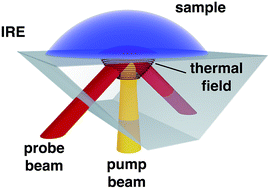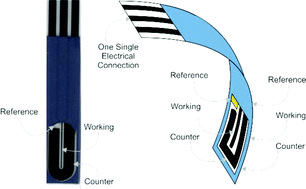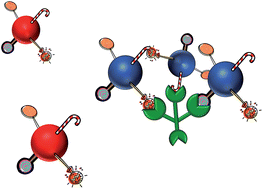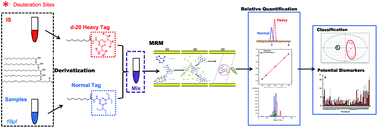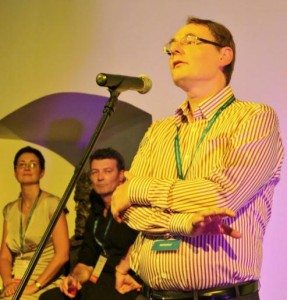Take a look at our most recent HOT Analyst articles, these are now free to access for the next few weeks!
Label-free phenotyping of peripheral blood lymphocytes by infrared imaging
M. Verdonck, S. Garaud, H. Duvillier, K. Willard-Gallo and E. Goormaghtigh
Analyst, 2015, Advance Article
DOI: 10.1039/C4AN01855A
PNGase F-mediated incorporation of 18O into glycans for relative glycan quantitation
Wei Zhang, Weiqian Cao, Jiangming Huang, Hong Wang, Ji Wang, Chen Xie and Pengyuan Yang
Analyst, 2015, Advance Article
DOI: 10.1039/C4AN02073A
A microelectrochemical biosensor for real-time in vivo monitoring of brain extracellular choline
Keeley L. Baker, Fiachra B. Bolger and John P. Lowry
Analyst, 2015, Advance Article
DOI: 10.1039/C4AN02027H
Differentiation of Prostate Cancer from Normal Tissue in Radical Prostatectomy Specimens by Desorption Electrospray Ionization and Touch Spray Ionization Mass Spectrometry
K. S. Kerian, A. K. Jarmusch, V. Pirro, M. O. Koch, T. A. Masterson, L. Cheng and R. G. Cooks
Analyst, 2015, Advance Article
DOI: 10.1039/C4AN02039A
Multi-enzyme microreactor-based online electrochemical system for selective and continuous monitoring of acetylcholine
Yuqing Lin, Ping Yu and Lanqun Mao
Analyst, 2015, Advance Article
DOI: 10.1039/C4AN02089H
Fluorescence Chemosensors for Hydrogen Sulfide Detection in Biological Systems
Zhi Guo, Guiqiu Chen, Guangming Zeng, Zhongwu Li, Anwei Chen, Jiajia Wang and Longbo Jiang
Analyst, 2015, Advance Article
DOI: 10.1039/C4AN01909A
Marker-free automated histopathological annotation of lung tumour subtypes by FTIR-Imaging
Frederik Großerueschkamp, Angela Kallenbach-Thieltges, Thomas Behrens, Thomas Brüning, Matthias Altmayer, Georgios Stamatis, Dirk Theegarten and Klaus Gerwert
Analyst, 2015, Advance Article
DOI: 10.1039/C4AN01978D
Universal Electronics for Miniature and Automated Chemical Assays
Pawel L. Urban
Analyst, 2015, Advance Article
DOI: 10.1039/C4AN02013H
Raman microimaging of murine lungs: insight into the vitamin A content
K. M. Marzec, K. Kochan, A. Fedorowicz, A. Jasztal, K. Chruszcz-Lipska, J. Cz. Dobrowolski, S. Chlopicki and M. Baranska
Analyst, 2015, Advance Article
DOI: 10.1039/C4AN01881H
Stereospecific recognition and quantitative structure-activity relationship between antibodies and enantiomers: ofloxacin as model hapten
Hongtao Mu, Baoling Wang, Zhenlin Xu, Yuanming Sun, Xinan Huang, Yudong Shen, Sergei A. Eremin, Anatoly V. Zherdev, Boris B. Dzantiev and Hongtao Lei
Analyst, 2015, Advance Article
DOI: 10.1039/C4AN02155J
A colorimetric method of analysis for trace amounts of hydrogen peroxide with the use of the nano–properties of Molybdenum disulfide
Xinrong Guo, Yong Wang, Fangying Wu, Yongnian Ni and Serge Kokot
Analyst, 2015, Advance Article
DOI: 10.1039/C4AN01950D
Infrared spectral signature of human lymphocyte subpopulations from peripheral blood
N. Wald, A. Legat, C. Meyer, D. E. Speiser and E. Goormaghtigh
Analyst, 2015, Advance Article
DOI: 10.1039/C4AN02247E
Screening and mapping pigments in paintings using scanning electrochemical microscopy (SECM)
Antonio Doménech-Carbó, María Teresa Doménech-Carbó, Miguel Silva, Francisco Manuel Valle-Algarra, José Vicente Gimeno-Adelantado, Francisco Bosch-Reig and Rufino Mateo-Castro
Analyst, 2015, Advance Article
DOI: 10.1039/C4AN01911C
Transmission versus transflection mode in FTIR analysis of blood plasma: is the EFSW effect the only reason of the observed spectral distortions?
Emilia Staniszewska-Slezak, Anna Rygula, Kamilla Malek and Malgorzata Baranska
Analyst, 2015, Advance Article
DOI: 10.1039/C4AN01842G
Multivariate statistical methodologies applied in biomedical Raman spectroscopy: Assessing the validity of partial least squares regression using simulated model datasets.
Mark E. Keating, Haq Nawaz, Franck Bonnier and Hugh J. Byrne
Analyst, 2015, Advance Article
DOI: 10.1039/C4AN02167C
A colorimetric nitrite detection system based on Ag@Au nanoparticles with excellent selectivity and high sensitivity
Tianhua Li, Yonglong Li, Yujie Zhang, Chen Dong, Zheyu Shen and Aiguo Wu
Analyst, 2015, Advance Article
DOI: 10.1039/C4AN01583E
Flow-through polymerase chain reaction inside a seamless 3D helical microreactor fabricated utilizing a silicone tube and a paraffin mold
Wenming Wu, Kieu The Loan Trinh and Nae Yoon Lee
Analyst, 2015, Advance Article
DOI: 10.1039/C4AN01675K
ß-Cyclodextrin functionalised gold nanoclusters as a luminescent probe for the ultrasensitive detection of dopamine
Rui Ban, E. S. Abdel-Halim, Jianrong Zhang and Jun-Jie Zhu
Analyst, 2015, Advance Article
DOI: 10.1039/C4AN02161D
In-vivo and continuous measurement of bisulfide in the hippocampus of rat’s brain by on-line integrated microdialysis/droplet-based microfluidic system
Feidan Gu, Xiaoyu Zhou, Xiaocui Zhu, Meiping Zhao, Jie Hao, Ping Yu and Lanqun Mao
Analyst, 2015, Advance Article
DOI: 10.1039/C4AN01974A, Paper
Infrared imaging of MDA-MB-231 breast cancer cell line phenotypes in 2D and 3D cultures
Margarita Smolina and Erik Goormaghtigh
Analyst, 2015, Advance Article
DOI: 10.1039/C4AN01833H
High throughput absorbance spectra of cancerous cells: a microscopic investigation of spectral artifacts
A. Mignolet and E. Goormaghtigh
Analyst, 2015, Advance Article
DOI: 10.1039/C4AN01834F
Label-free imaging and identification of typical cells of acute myeloid leukaemia and myelodysplastic syndrome by Raman microspectroscopy
R. Vanna, P. Ronchi, A. T. M. Lenferink, C. Tresoldi, C. Morasso, D. Mehn, M. Bedoni, S. Picciolini, L. W. M. M. Terstappen, F. Ciceri, C. Otto and F. Gramatica
Analyst, 2015, Advance Article
DOI: 10.1039/C4AN02127D
Infrared imaging of primary melanoma reveals hints of regional and distant metastases
N. Wald and E. Goormaghtigh
Analyst, 2015, Advance Article
DOI: 10.1039/C4AN01831A
Pituitary gland under infrared light – in search of a representative spectrum for homogenous regions
A. Banas, K. Banas, A. Furgal-Borzych, W. M. Kwiatek, B. Pawlicki and M. B. H. Breese
Analyst, 2015, Advance Article
DOI: 10.1039/C4AN01985G
Design of molecularly imprinted conducting polymer protein-sensing films via substrate-dopant binding
Elena Komarova, Matt Aldissi and Anastasia Bogomolova
Analyst, 2015, Advance Article
DOI: 10.1039/C4AN01965B
Vibrational signatures to discriminate liver steatosis grades
Chengyuan Peng, Franck Chiappini, Slávka Kaščáková, Mélanie Danulot, Christophe Sandt, Didier Samuel, Paul Dumas, Catherine Guettier and François Le Naour
Analyst, 2015, Advance Article
DOI: 10.1039/C4AN01679C
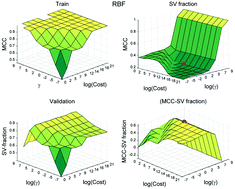
A. Maguire, I. Vega-Carrascal, J. Bryant, L. White, O. Howe, F. M. Lyng and A. D. Meade
Analyst, 2015, Advance Article
DOI: 10.1039/C4AN01887G
Loss of the preferential control over the striato-nigral direct pathway by striatal NMDA receptors in a rat model of Parkinson’s disease
Michele Morari and Martina Fantin
Analyst, 2015, Advance Article
DOI: 10.1039/C4AN01918K
Infrared Micro-spectroscopy for Cyto-pathological Classification of Esophageal Cells
Douglas Townsend, Miloš Miljković, Benjamin Bird, Kathleen Lenau, Oliver Old, Max Almond, Catherine Kendall, Gavin Lloyd, Neil Shepherd, Hugh Barr, Nick Stone and Max Diem
Analyst, 2015, Advance Article
DOI: 10.1039/C4AN01884B


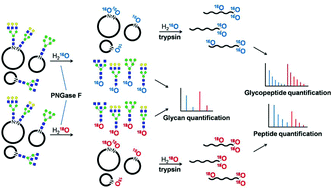
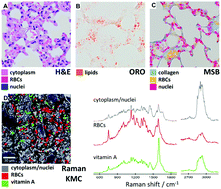











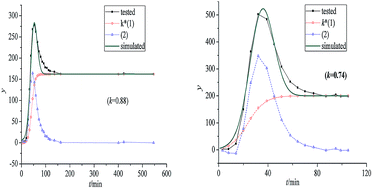
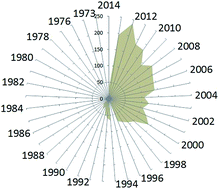
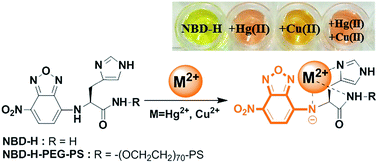
 Scientists in Germany have developed a spectroscopy method to
Scientists in Germany have developed a spectroscopy method to 